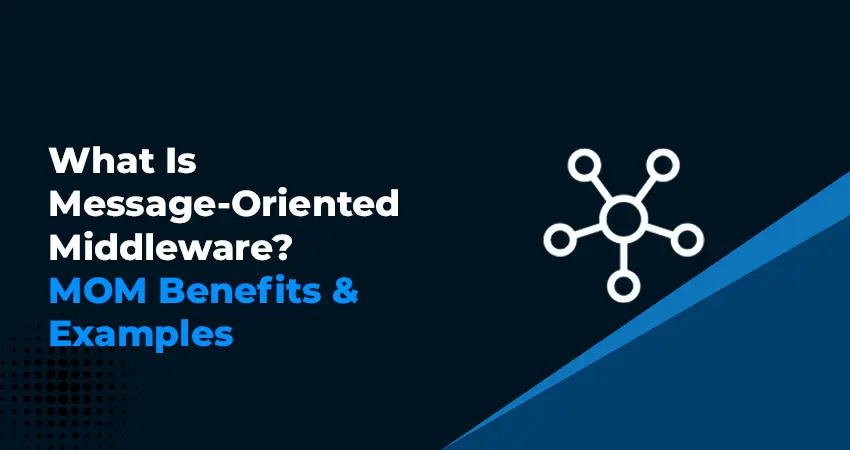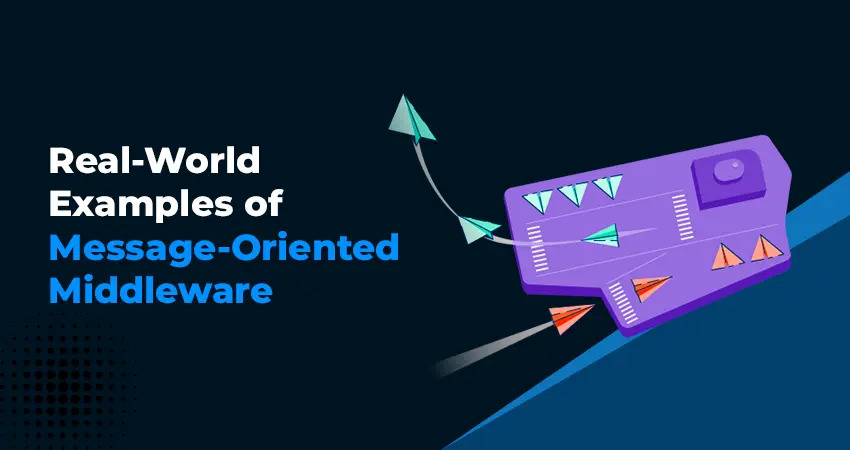
The Backbone of Modern Communication Systems
Systems don’t just talk nowadays; they message. Behind every seamless interaction between applications, there’s an invisible infrastructure that ensures the smooth exchange of data, even across different environments. Welcome to the world of Message-Oriented Middleware (MOM), the unsung hero driving modern communication systems.
From enabling real-time data sharing to supporting cloud-native setups, MOM is a key enabler of scalable, decoupled and resilient systems. But how exactly does it work? And why is it so crucial for today's software architectures?
While this post won’t do a deep technical deep-dive into tools like IBM MQ, we’ll walk you through the essentials of MOM, its cloud-oriented applications, architecture and real-world examples. You'll come away with everything you need to understand message middleware in cloud computing and beyond.
What Is Message-Oriented Middleware (MOM)?
Message-Oriented Middleware (MOM) acts as the bridge that connects shared purposes allowing them to communicate effectively through the exchange of messages. Think of MOM as a highly reliable postmaster that ensures your data “letters” are delivered to the right destination in the right order, even if applications don't operate at the same speed or schedule.
MOM fits within the broader category of middleware which includes other software layers that connect applications. Within this niche of message middleware, the unique capability of MOM is enabling asynchronous communication, meaning systems don’t need to be directly dependent on one another to exchange information.
The main goal? To facilitate loose coupling between components. This makes MOM ideal for microservices, hybrid cloud setups or systems communicating across geographical locations.
Key features of MOM include:
- Reliable message delivery (even during system failures).
- Support for asynchronous processing.
- Compatibility with multiple programming languages and platforms.
When we discuss “message middleware”, its core purpose is to act as the digital backbone of communication, pushing and pulling data where it’s needed without worrying about synchronization.
Why Message-Oriented Middleware Is Used
Before MOM, system integration was often rigid, complex and error-prone. Applications needed to directly connect and communicate in real-time creating a fragile web where changes in one component could ripple unpredictably. MOM evolved as a solution to these challenges.
Challenges Solved by MOM:
- System Decoupling
With MOM, applications no longer need to depend on one another for direct communication. They send messages to a queue or topic and middleware handles the routing.
- Support for Scalability
By decoupling systems, MOM enables scaling individual components independently. Need more power for processing? Add a new service without re-engineering the entire architecture.
- Cloud Integrations
Modern environments often employ hybrid or fully cloud-native models and MOM is central to this landscape. “Message middleware in cloud computing” ensures seamless communication between on-premise systems and third-party platforms like IBM MQ.
Message-Oriented Middleware Advantages and Disadvantages
Advantages:
- Loose Coupling: Systems function independently and are less likely to break during updates.
- Asynchronous Messaging: Messages can be queued for later processing.
- Fault Tolerance: With retries and redundancies, MOM ensures delivery even if an endpoint is temporarily unavailable.
Disadvantages:
- Complexity: Implementation and operation require expertise.
- Latency: Some real-time use cases may experience delays due to asynchronous processing.
While MOM’s advantages often outweigh its drawbacks, assessing its fit for your specific needs is key.
Message-Oriented Middleware in Cloud Computing
The shift to cloud-native applications has allowed message-oriented middleware in cloud computing to shine. Whether you're using a public cloud, private cloud or hybrid solution, MOM ensures seamless communication across disparate systems.
With Messaging-as-a-Service (MaaS) offerings major providers have made MOM more accessible than ever. Examples include:
- IBM MQ: A robust messaging middleware designed for secure and reliable communication across diverse platforms allowing seamless integration for enterprise applications.
- Amazon SQS: Scalable and easy-to-use message queuing for AWS environments.
- Azure Service Bus: A fully managed enterprise message broker for cloud-scale applications.
- Google Pub/Sub: Supports message broadcasting and event-driven architectures.
Cloud-native MOM solutions encompass high scalability, multi-zone failover and simplified deployment, making them essential tools for businesses operating in an increasingly interconnected ecosystem.
Need expert advice? Connect with us today:Click here and take your systems to the next level!
Architecture of Message-Oriented Middleware
At the heart of message-oriented middleware architecture are three primary components that drive its functionality.
1. Message Brokers
Message brokers act as intermediaries receiving messages from producers and routing them to the appropriate consumers. Examples include IBM MQ.
2. Message Queues
Message queues store messages until the receiving application is ready to process them. This enables asynchronous communication and ensures no message goes undelivered.
3. Pub/Sub Systems
The publish-subscribe (Pub/Sub) model allows multiple consumers to subscribe to a topic and receive messages broadcast to that topic. This is ideal for event-driven architectures.
Together, these components form a robust message-oriented architecture that can easily adapt to applications requiring high performance and resilience.
Real-World Examples of Message-Oriented Middleware

To understand how MOM works, let's look at some real-life purposes and tools.
IBM MQ: IBM MQ stands out for its strong security features and seamless combination with legacy systems making it a go-to choice for enterprise-level purposes. It excels in guaranteeing trustworthy message delivery even in complicated transactional environments and supports a broad spectrum of programming languages and platforms. Trusted by industries like banking and healthcare, IBM MQ is perfect for scenarios requiring high availability, expandability and full adherence standards.
Apache Kafka: Kafka is a message-oriented middleware example widely popular in real-time data streaming scenarios. Sellers use it to power recommendation engines and financial institutions use it for fraud detection.
RabbitMQ: Known for its flexibility, RabbitMQ is great for server-side workflows and lightweight microservices.
Amazon SQS: Used by thousands of businesses globally, SQS ensures the reliability of large-scale distributed systems.
Among these options, IBM MQ stands out as one of the best solutions for businesses needing robust, secure and scalable messaging middleware. Its reliable message delivery and advanced features make it ideal for businesses managing complex systems with critical workloads.
Choosing the Right Middleware
When selecting a middleware tool consider the following criteria to ensure it aligns with your organizational needs:
- Latency: Determine how much delay is acceptable for your use case. Real-time systems may need lightweight tools.
- Volume: High message traffic requires robust platforms like IBM MQ.
- Integration Requirements: Check whether the middleware can seamlessly integrate with your existing systems.
Pro Tip: Use MOM with message queue middleware when operating systems that rely on batch processing or high-volume reporting.
Smarter Communication Through Messaging
From cloud computing to microservices, Message-Oriented Middleware is the backbone enabling modern communication. It bridges systems, strengthens scalability and unlocks potential for innovation in every industry.
Are you looking to integrate MOM into your business? Start by talking to our expert team (click here) about implementing an architecture that supports the next phase of your organization.
Talk to Our Expert
Our Services
ISO 20022 (MT to MX) Adoption & Migration
FTM For Corporate Payment Services
IBM Cloud Park For Integration (CP4i)
